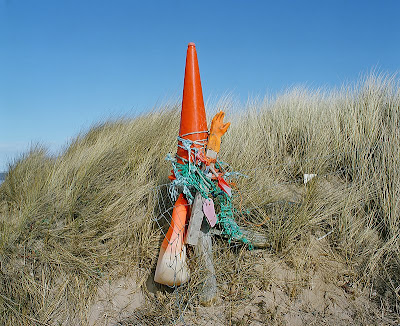Regarding our judging criteria- there's two of us having similar, albeit individual tastes. After a general consensus of what's in the running, we pick two photographers each according to our considerably subjective criteria. That simple... and hope you enjoy this much deserving work.
Monday 9 February 2009
Regarding our judging criteria- there's two of us having similar, albeit individual tastes. After a general consensus of what's in the running, we pick two photographers each according to our considerably subjective criteria. That simple... and hope you enjoy this much deserving work.
Alan George
John Darwell
David Wolf
George Georgiou
Photography, at least to me, has a direct relationship with the "reality" the photographer experiences, either accidental or contrived. The photographer selects some portion of this "reality," captiures it on a two dimensional plane and presents it as a photograph. The job of a photographer is to manage this "reality" in such a way as to result in interesting photographs. Traveling to exotic destinations, achieving access to the otherwise inaccessible locations/people, constructing film set like concoctions; these are but a few of the many "reality" enhancement techniques. None of which were readily available to me. This series of images is a result of an attempt to make the most of my forced 'reality'."
Alan George was born in Fayetteville, North Carolina in 1968. He received a BS from the University of Tennessee in 1992. Alan began his involvement with photography in 2003 and is currently based in San Francisco, California with his wife and two children.












John Darwell - Not Starting From Here
John Darwell is an independent photographer working with museums and galleries on projects that reflect his interest in social and industrial change and his concern for the environment. His work has been exhibited, and published, widely both nationally and internationally, including exhibitions in London, Amsterdam, the USA, Mexico, South America and the Canary Islands, and is featured in a number of important collections including the Victoria & Albert Museum, London and the Metropolitan Museum of Art, New York. He has had seven books of his photographs published, including in 2007 a major study of the 2001 Uk Foot and Mouth epidemic entitled ‘Dark Days’, (Dewi Lewis Publishing); ‘Committed to Memory’ at 25 year retrospective on his work to coincide with exhibition of the same name at Tullie House Museum and Art Gallery, Carlisle in May-July 2007 and 'Legacy' (2001 Dewi Lewis) a view inside the Chernobyl Exclusion Zone.
"This work is a journey of exploration and encounters along the Cumbria coastline (home of the Lake district) in the most north western county in England. The work (all images produced on 6x7 format) travels from the northerly point of the coast to the counties' southerly most point. The only limitation I set myself being that whenever I took a photograph, I had to be able to see the sea somewhere within my field of view. This region is rich in post industrial history and notorious for being the home of the Sellafield Nuclear Reprocessing Plant. My aim was to produce a personal journey to help me better understand my feelings for this stretch of coastline within the county I had made my home."

Left Behind speaks to the parallel lives of things and people. Both document and metaphor, the project collects unwanted, forgotten and discarded things, and places them in a context rich with social insight and emotional resonance. All of the objects have been photographed as found, largely in San Francisco’s Mission District neighborhood, from 2003 to the present.
David's photographs have been exhibited nationally at such venues as the Santa Barbara Museum of Art, the Griffin Museum of Photography, the Photographic Center Northwest, and the Society for Contemporary Photography. His work is included in a variety of museum, corporate, and private collections.












The worst aspect was the total lack of care and stimulation and the high number of people who should never have been in these places. People with physical disabilities, (the boy with no legs was a victim of a car accident and orphaned), downs syndrome, a high proportion of Roma or children whose misfortune was to have been born in the institutions. By living in this environment of deprivation, with little stimulation or compassion they start to display repetitive rocking behaviour and self-injury.
By 2002, on my final visits, money had been raised in a public campaign of awareness in Serbia and with the help of a number of NGO’s conditions had improved. For me, after the initial shock at the conditions and total lack of care, it became clear that the patients from all ethnic backgrounds were able to display more community, affection and care with each other, than the sad situation that their "sane" countrymen were displaying to each other on the outside." GG.


Also loving...........

..........................................
.....



























